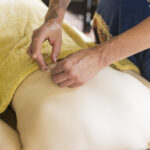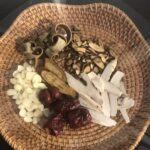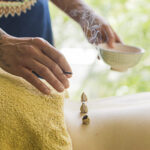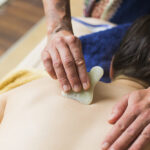Moxibustion
Moxibustion is a traditional Chinese therapy that involves burning dried mugwort (Artemisia vulgaris) to stimulate specific points on the body. The heat generated by the burning moxa is used to promote healing. It is often used in conjunction with acupuncture or as a standalone treatment.
What is Moxibustion?
Moxibustion is a therapeutic technique used in Chinese Medicine and other traditional healing systems like Japanese acupuncture. It involves burning moxa, a dried and processed form of the mugwort plant, at or near specific acupuncture points or areas of the body. The heat generated by the burning moxa is used to stimulate these points and promote healing.
Why is Moxibustion used?
Moxibustion is used for a variety of purposes, including:
- Pain Relief: Moxibustion can help alleviate pain and discomfort, such as muscle pain, joint pain, and menstrual cramps. The heat and warmth generated during the therapy can relax muscles and reduce pain.
- Immune System Support: Moxibustion is believed to tonify or strengthen the body’s Qi (energy) and enhance the immune system to prevent illness and boost overall health.
- Digestive Health: Moxibustion is sometimes used to address digestive issues, such as indigestion, diarrhea, and nausea. It is believed to regulate the digestive system’s function, especially when there is an excess of internal cold.
- Turning Breech Babies: A specific type of moxibustion called “breech moxibustion” is used to help turn babies from a breech position to a head-down position in pregnant women which is often done in the late stages of pregnancy.
- Women’s Health: Moxibustion can be applied to specific points to address gynaecological concerns, including irregular menstruation, infertility, and menopausal symptoms.
- Cold and Damp Conditions: Moxibustion is used to warm the body and dispel cold and damp conditions, which are an example of Chinese Medicine’s diagnostic patterns of disharmony.
How is Moxibustion performed?
There are several methods of moxibustion, but the most common include:
Direct Moxibustion: In this method, a small cone or cylinder of moxa is placed directly on the skin or an acupuncture point. The moxa is ignited, and the practitioner removes it once it starts to burn. This method can cause a warming sensation or mild discomfort but is generally not painful.
Indirect Moxibustion: Indirect moxibustion is the more commonly used method. In this approach, the moxa is attached to the end of an acupuncture needle, a slice of ginger, or a specific medium, like salt or garlic. The moxa is ignited and held close to the skin or the acupuncture point without directly touching it. This method generates heat without any risk of burns.
Warm Needle Moxibustion: In this technique, an acupuncture needle is inserted into the skin, and moxa is burned on the needle’s handle. The heat is transferred directly into the acupuncture point through the needle.
Moxa Sticks: Moxa sticks, also known as moxa poles or moxa cigars, are often used in a home or clinical setting. These sticks are ignited and held near the skin or acupuncture points.
Moxibustion should be performed by trained practitioners, as improper use can result in burns or other adverse effects. If you’re interested in moxibustion, it’s essential to consult with a qualified healthcare provider or acupuncturist who can assess your specific health concerns and determine if moxibustion is an appropriate therapy for you.






